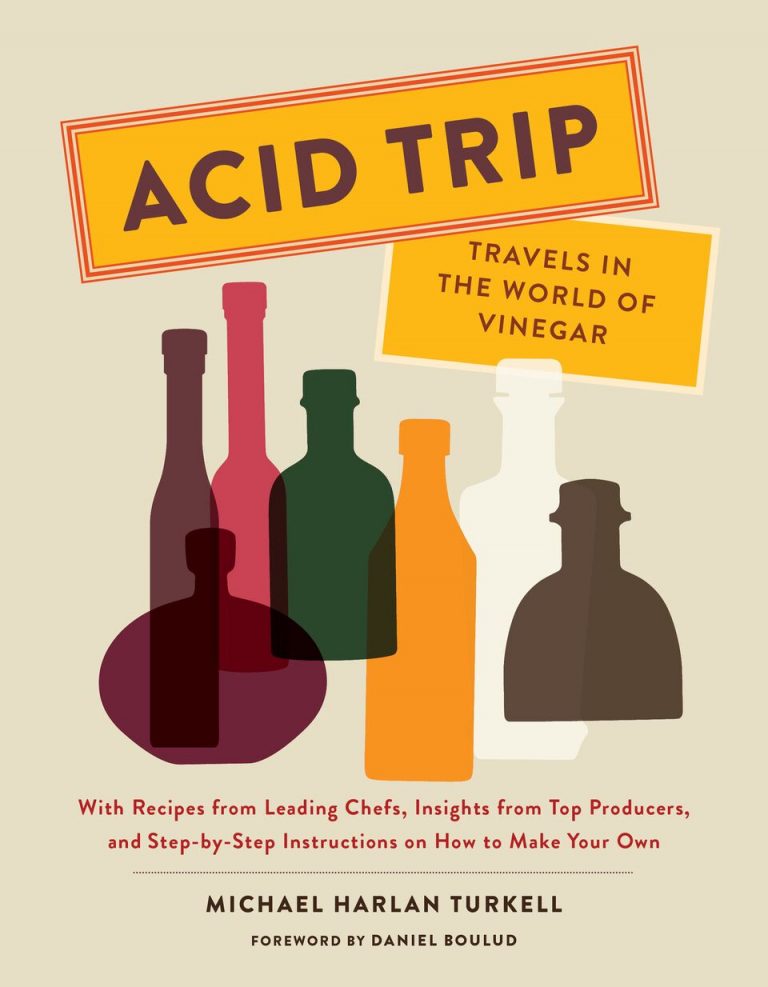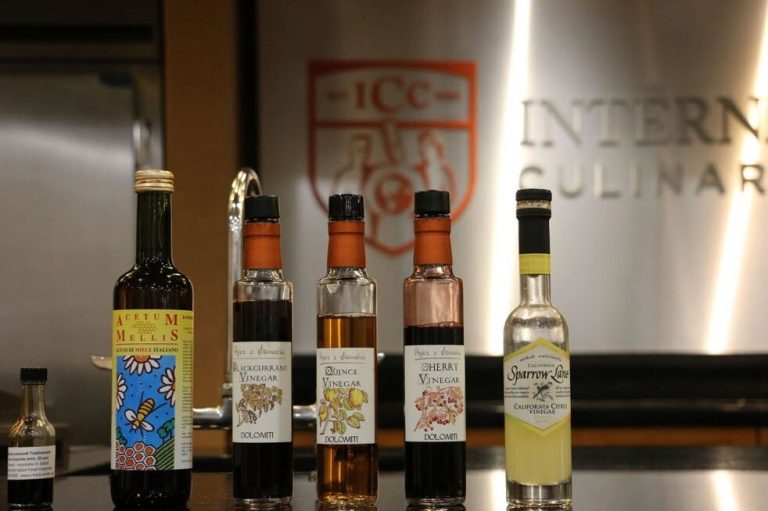Photographer, author and podcast host, Michael Harlan Turkell had his first acid trip at the age of 19 when famed Bostonian Chef Barbara Lynch gave him a cap full of something. He shot it back and recalls having “one of the most profound sensory experiences” of his life up until that point. That spiritual explosion of flavor – sweet, sour, sapid – became his gateway to the world of acidity.
By: Wajma Basharyar

Fast forward 15 years, he found himself in Vienna, Austria on the doorsteps of Erwin Gegenbauer, the maker of that first shot and quite possibly the best vinegar-craftsman in the world. While interacting with Gegenbauer, Michael learned the importance of capturing the purity of an ingredient and why it’s crucial in creating a great tasting vinegar.
“The majority of vinegar that I had tasted (up until that first Gegenbauer shot) was the kind that hits you in your chest, makes you cough; you can feel it on your tongue, but you don’t actually taste it,” says Michael.

While many people may associate it with bad grapes, during that trip, he realized that vinegar is actually made with the best grapes available. His yearning to learn more about how ingredients impact the quality of the product led him on a global journey to study vinegar-making practices from the people and places that have evolved the craft. He chronicled the expedition in a newly-released book, ACID TRIP: Travels in the World of Vinegar (Abrams, $29.99)
Through his lens, we’re transported to France, Italy, Austria, Japan and throughout North America to learn about the art and science of vinegar. The photography brings to life the richness of the recipes, the insights from world-renowned chefs including Daniel Boulud, Massimo Bottura and April Bloomfield. The book captures the essence of why good vinegar is necessary for culinary arts while the how-to tutorials give the reader front-row access to making their own vinegar at home with bases, such as honey, apple cider vinegar, rice and wine.

In France, Michael investigated the role of vinegar in relation to food techniques and the application thereof. What he concluded was that it all comes down to the basic balance of acid and fat; both elements prevalent in French food and more specifically, French sauces.

In Italy, Michelin-star Chef Massimo Bottura, who runs the number one restaurant in the world, showed Michael an example of a balsamic vinegar that was unlike any balsamic he had tasted before.
 As a self-proclaimed Japanophile, Michael was elated to make the trip to Japan and find a producer who could explain the full cycle of rice vinegar from start to end. “Given how much rice is produced in Asia, it’s unsurprising that a remarkable range of rice vinegars can be found there, too. I am partial to the premium rice vinegars of Japan, which are exceptionally fresh and clean-tasting.”
As a self-proclaimed Japanophile, Michael was elated to make the trip to Japan and find a producer who could explain the full cycle of rice vinegar from start to end. “Given how much rice is produced in Asia, it’s unsurprising that a remarkable range of rice vinegars can be found there, too. I am partial to the premium rice vinegars of Japan, which are exceptionally fresh and clean-tasting.”
Earlier this month, the ICC’s California campus was honored to have author/photographer/ podcast-host, Michael Harlan Turkell, visit the campus. He spent the afternoon educating students, alumni and staff all about the vinegar-making process. He shared stories of his travel experiences meeting the world’s best vinegar makers and he brought with him a range of artisanal varieties for us to taste.
- Acetaia Leonardi Balsamic Vinegar – a very special blend of balsamic vinegar aged for up to 25 years with the finest grapes
- Acetum Mellis Mead Vinegar – a honey vinegar with a golden, translucent color that has a delicate and fresh taste with a spark of acidity
- Pojer e Sandri Dolomiti Italian varieties in Cherry, Quince and Black Current – each has a distinct flavor and taste to represent its base ingredient Sparrow Lane, California Citrus Vinegar – a light, fresh and flavorful melody of orange, lime and lemon incorporated in fine barrel-aged chardonnay
At first glance, Michael Harlan Turkell may appear to be just another Brooklynite with a barrel of beer in his backyard. We came to learn, however, that he started working in kitchens as a young kid at the age of 15 in his hometown of Westchester, New York, and dreamed of becoming a full-fledged chef. Interestingly, when he later moved to Boston for college, he ended up dropping out of school to again work in restaurants. It wasn’t until he entered the high-end food scene in Boston that his palette was awakened to something new. Today, he is an expert in at-home vinegar making. He was proud to tell us that he even spent two years reverse-engineering one process and figured out the secret to making a great beer vinegar in his Brooklyn backyard!

According to Michael, generally, two kinds of vinegar have found their way to our dinner tables today; either the balsamic poured on salad or the apple-cider vinegar (ACV), touted for its health benefits. He explained that he aims to change that paradigm by broadening our acidic horizons and expanding our palettes to offer a more varied selection of vinegar that brings a harmonious balance of flavor to our everyday meals.
For a perfect summer treat, try a fresh take on the Negroni.
BALSAMIC NEGRONI, FROM DAMON BOELTE, GRAND ARMY, BROOKLYN, NEW YORK
Yields a 48-ounce (1.4 L) pitcher, 4-8 servings
Ingredients
- 16 ounces (180 ml) Campari
- 16 ounces (180 ml) Cocchi Vermouth di Torino
- 16 ounces (180 ml) gin, Beefeater preferred
- 1/2 pint (165 g) strawberries, sliced
- 1/2 English cucumber, sliced
- Ice
- 1/2 cup (120 ml) Balsamic vinegar, DOP
Directions
- In the pitcher, mix together Campari, vermouth and gin. Add the sliced strawberries and cucumber, let sit for 30 minutes for all the flavors to mingle, then top with ice.
- To serve, put a few ice cubes in a rocks glass, pour in 6 ounces (120 to 180 ml) of the Negroni, and float 1 tablespo0n of the balsamic vinegar on top.
This blog post was originally published by the International Culinary Center (ICC), founded as The French Culinary Institute (FCI). In 2020, ICE and ICC came together on one strong and dynamic national platform at ICE's campuses in New York City and Los Angeles. Explore your culinary education where the legacy lives on.



